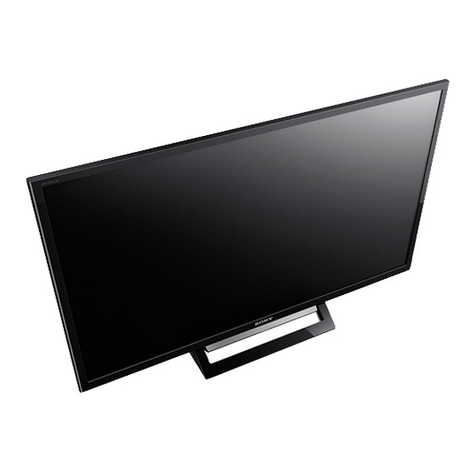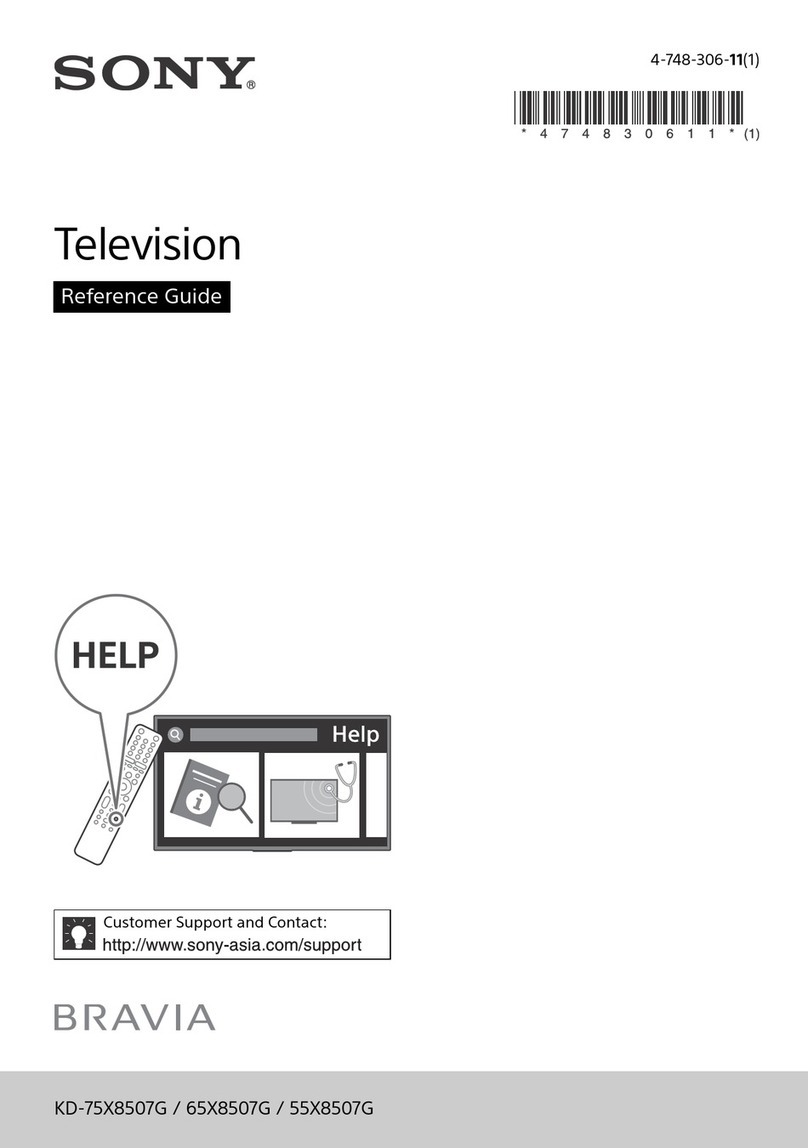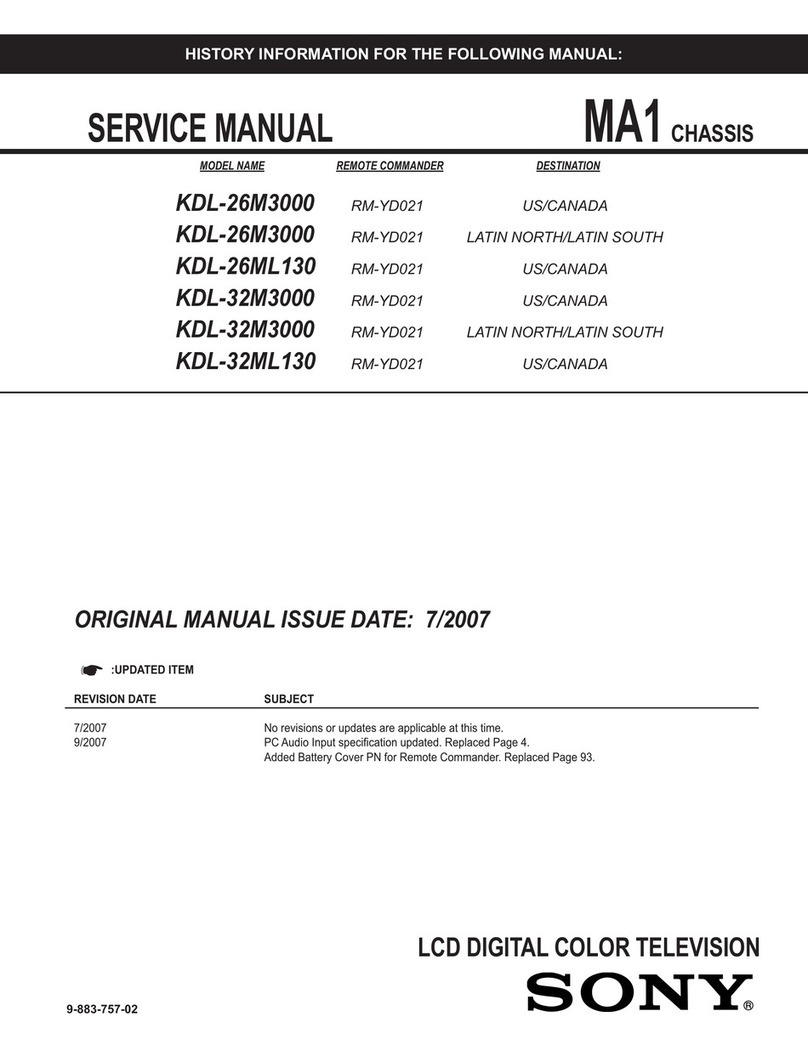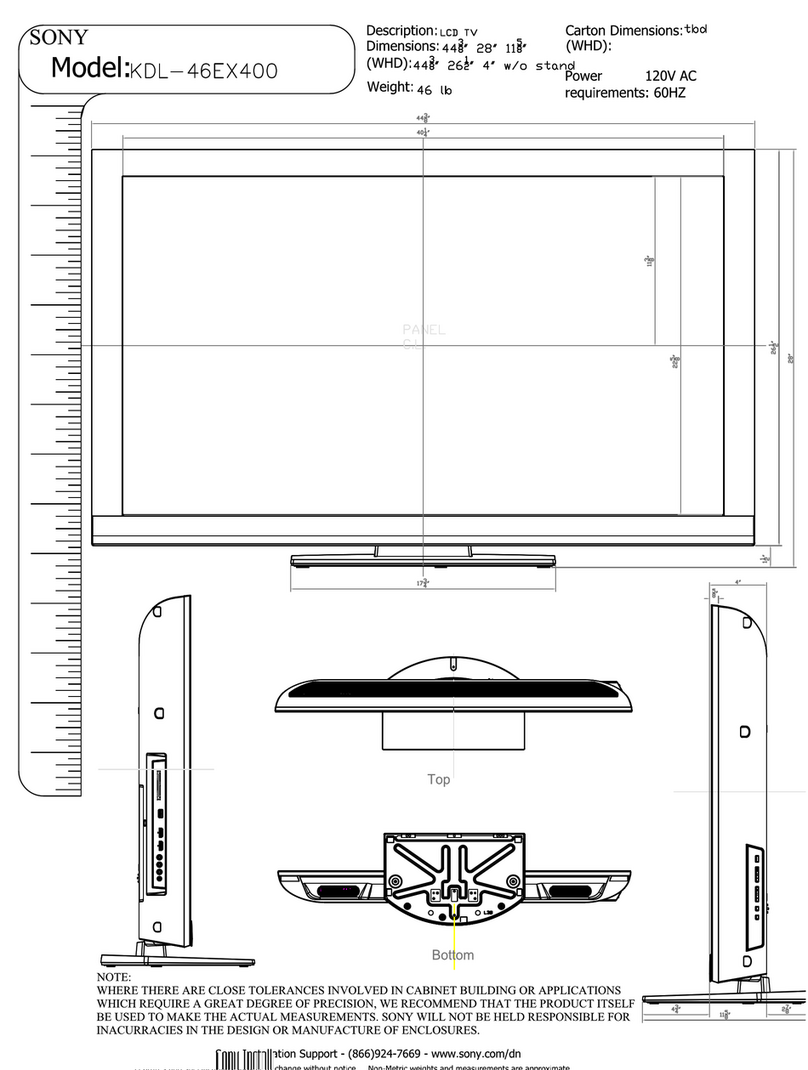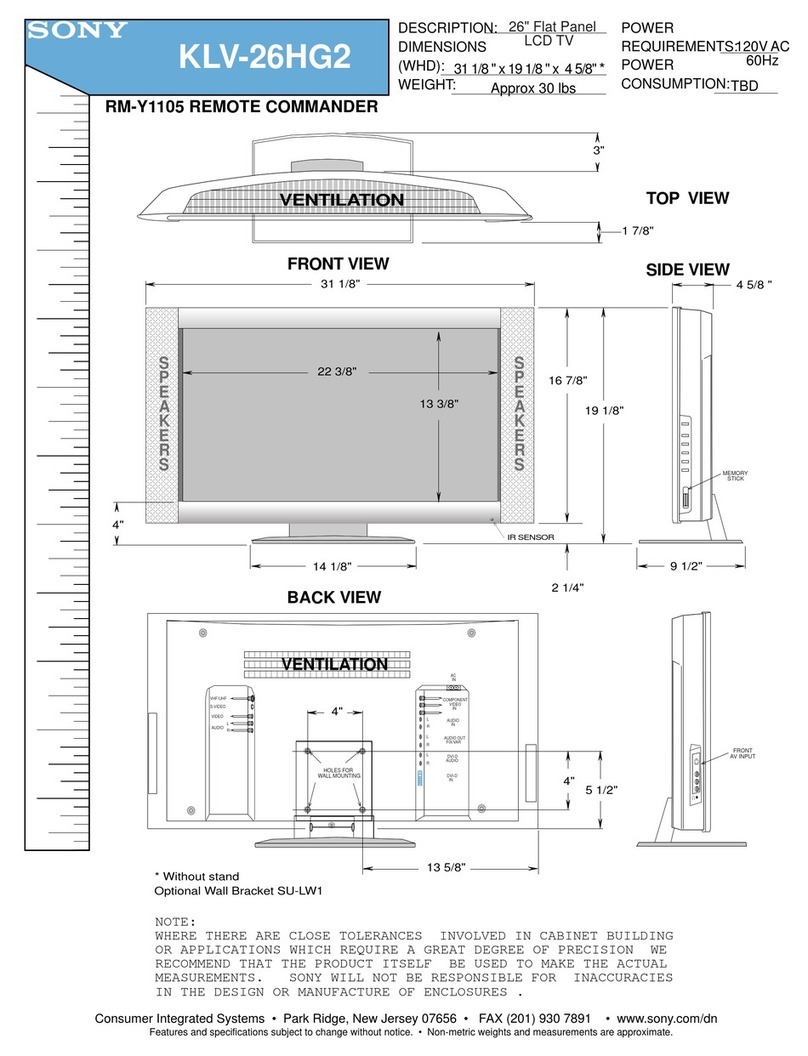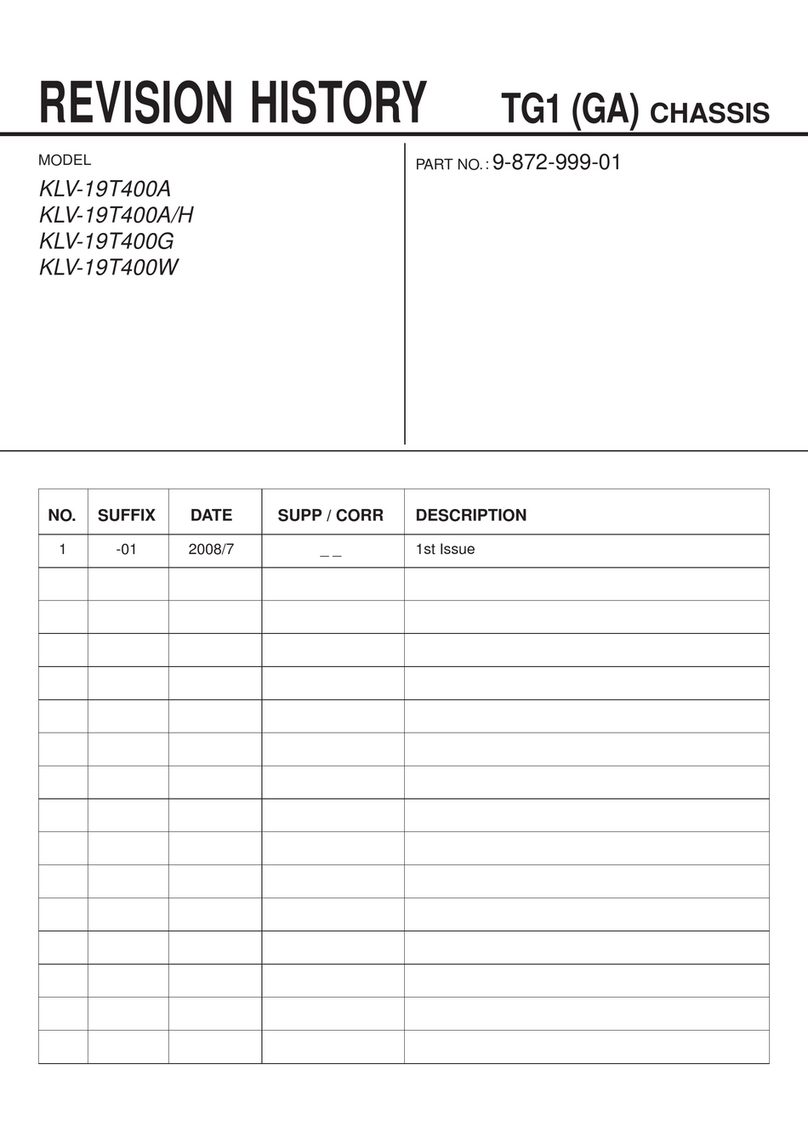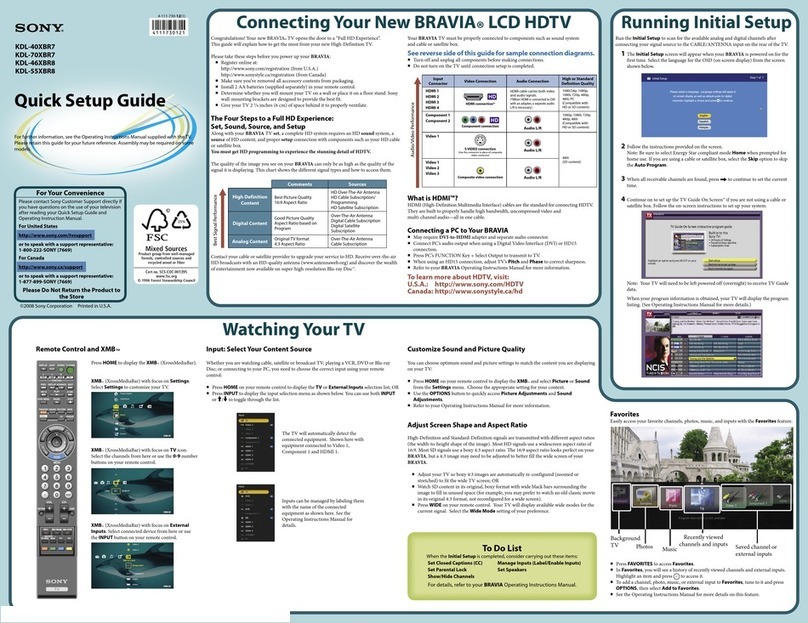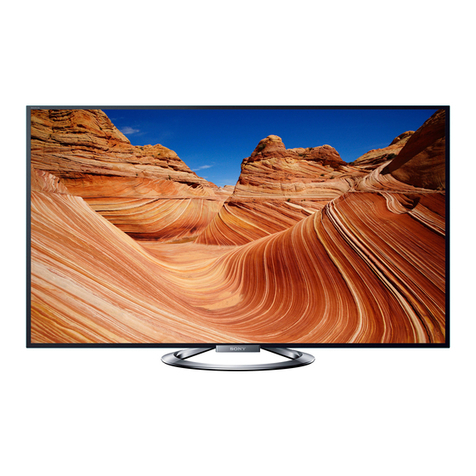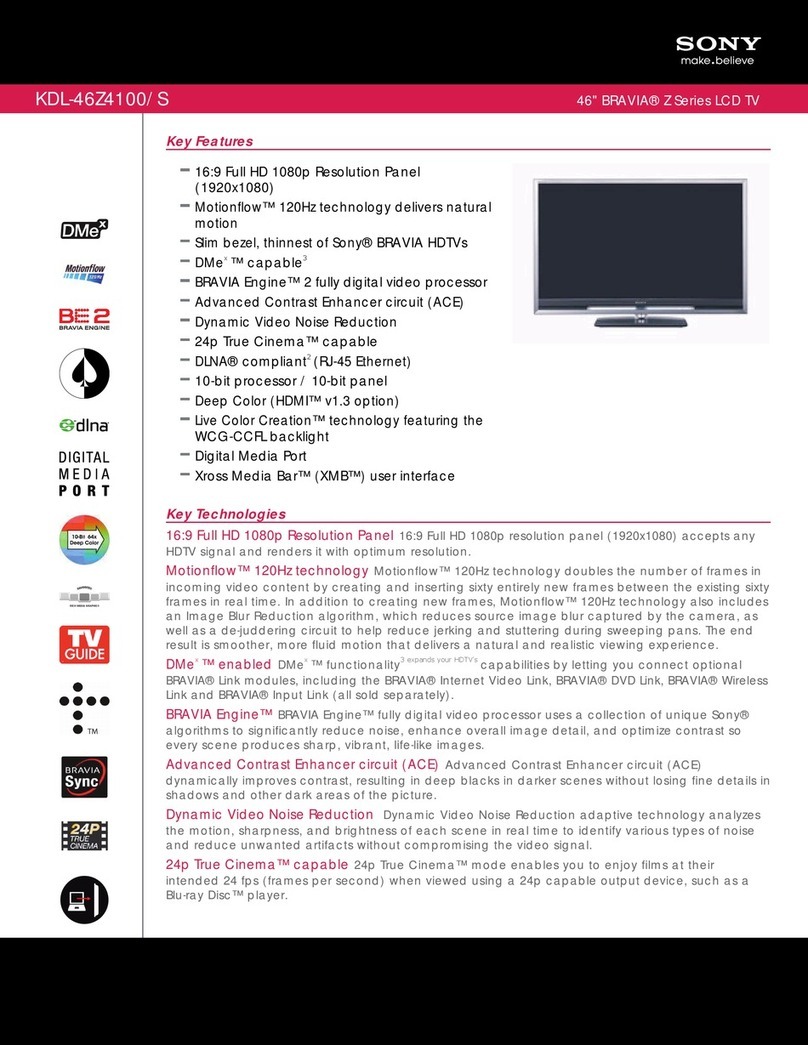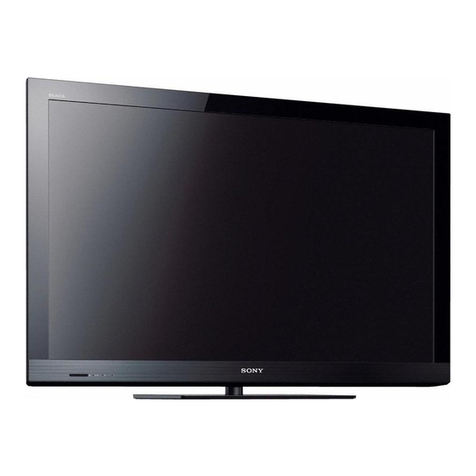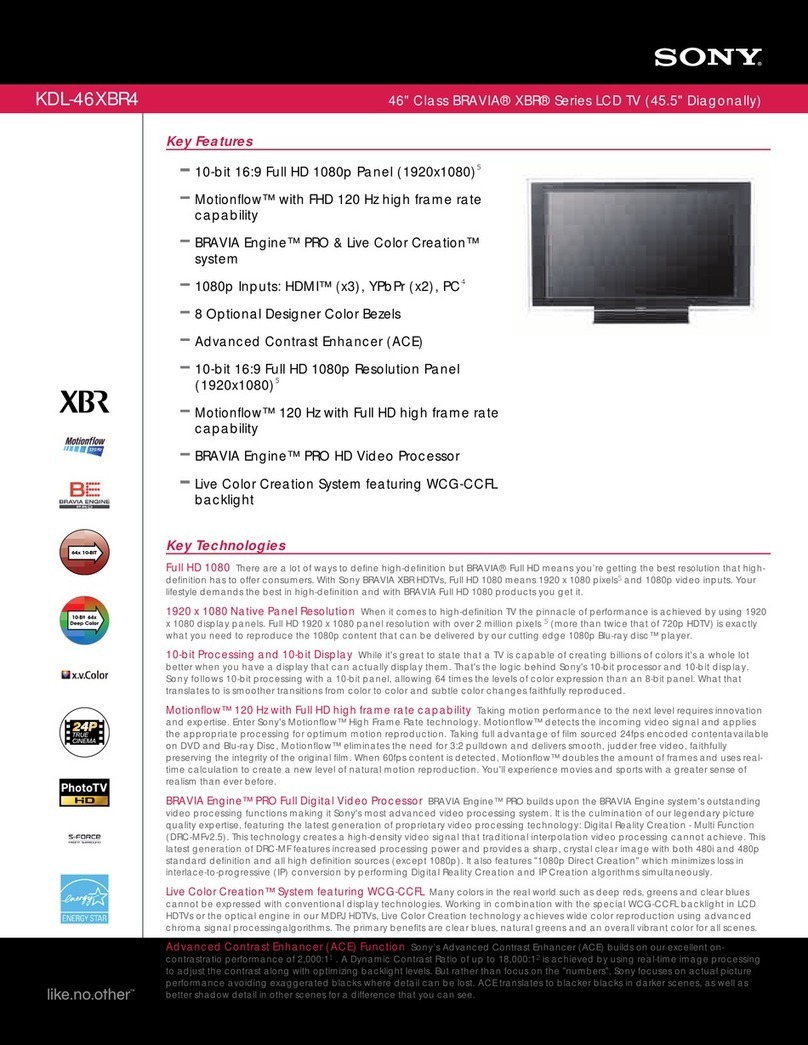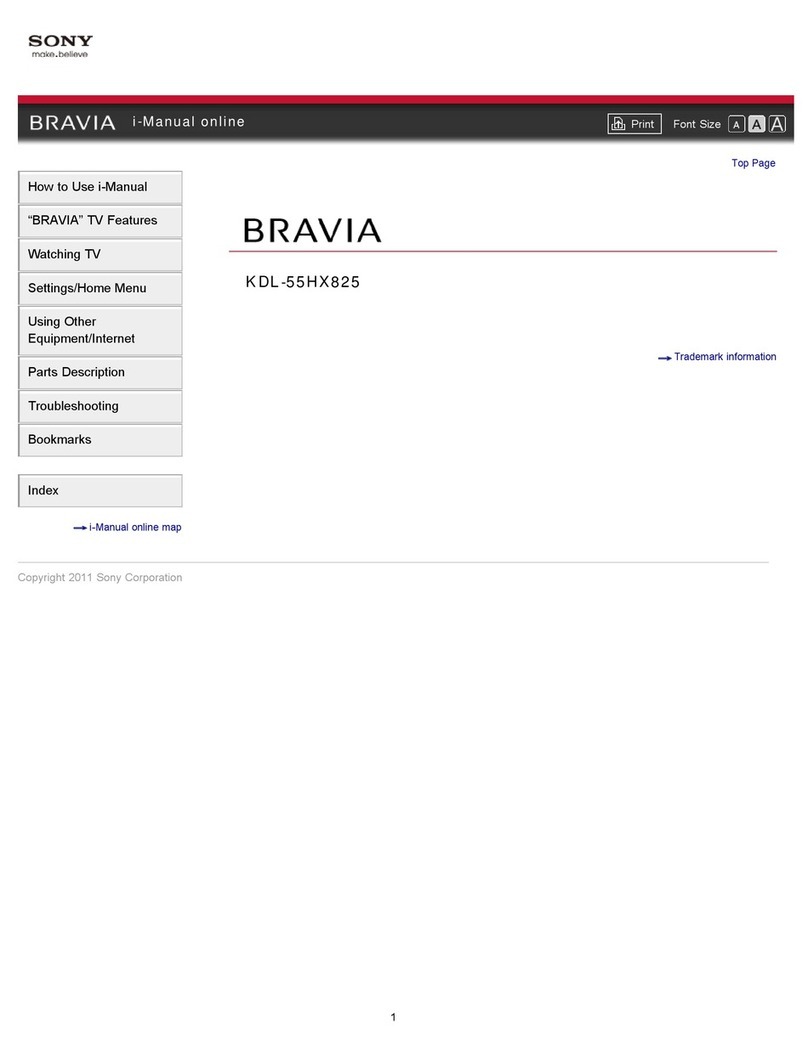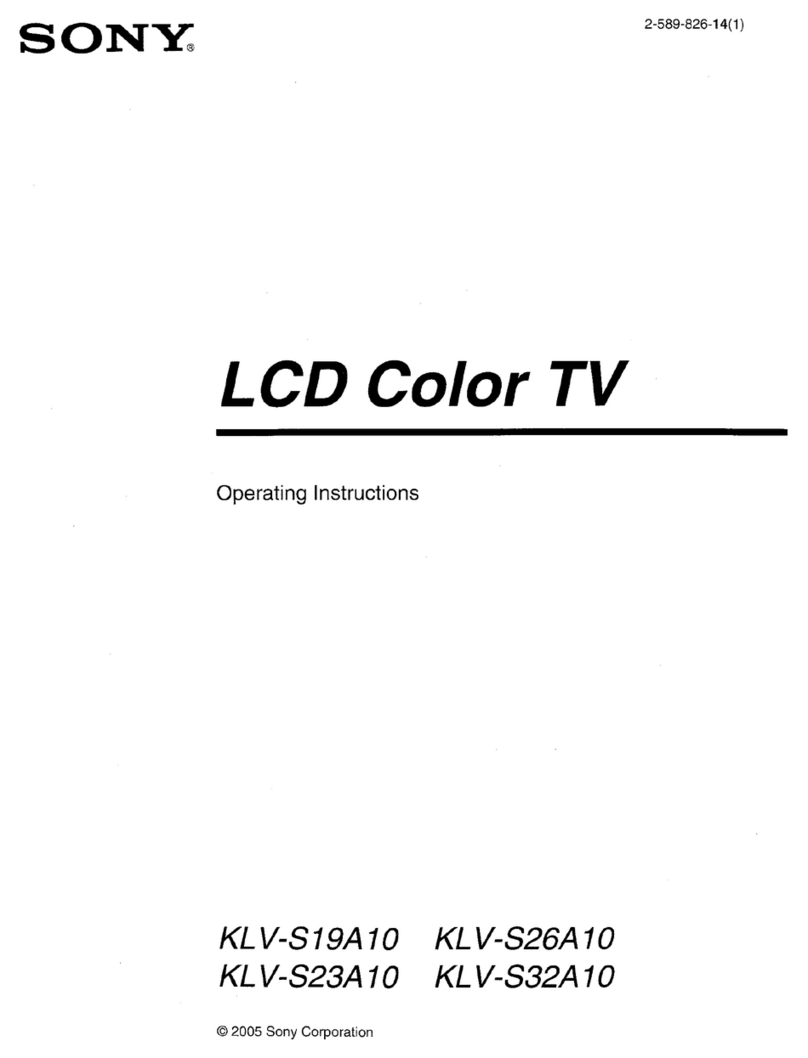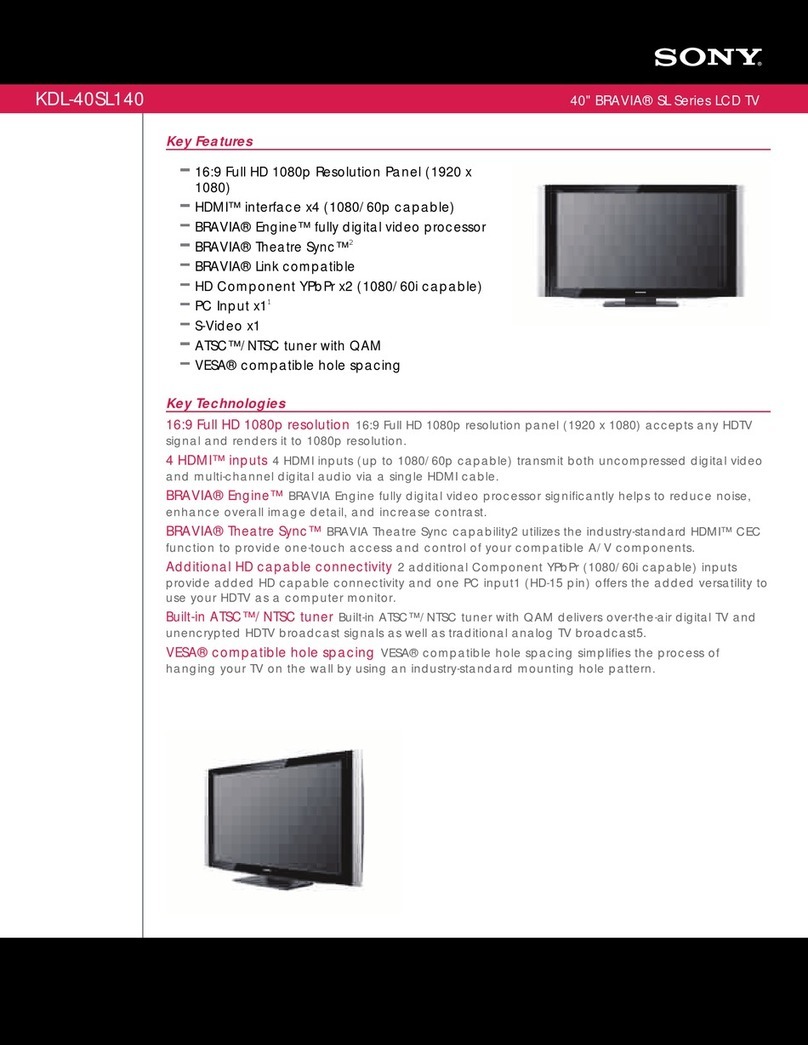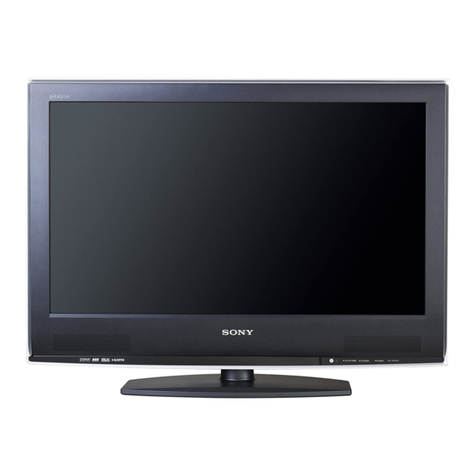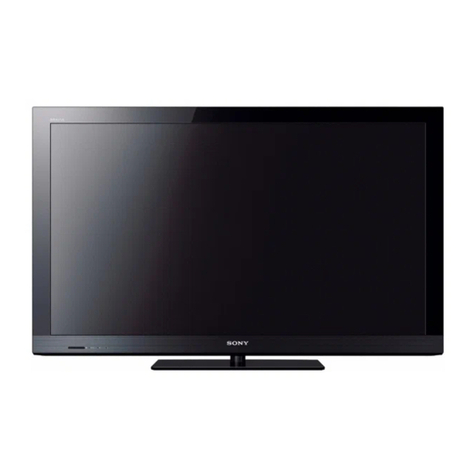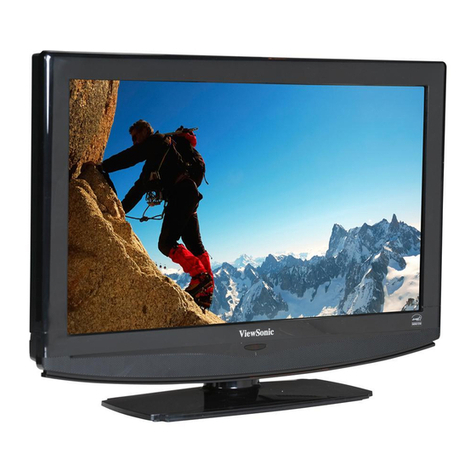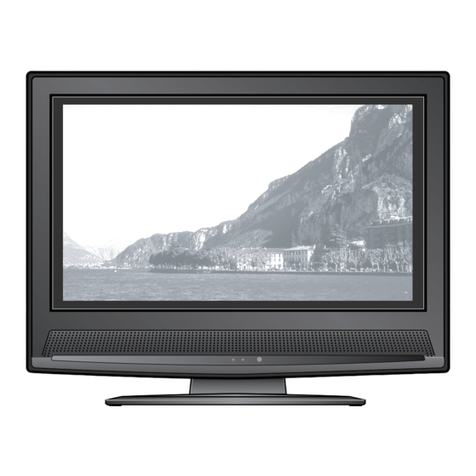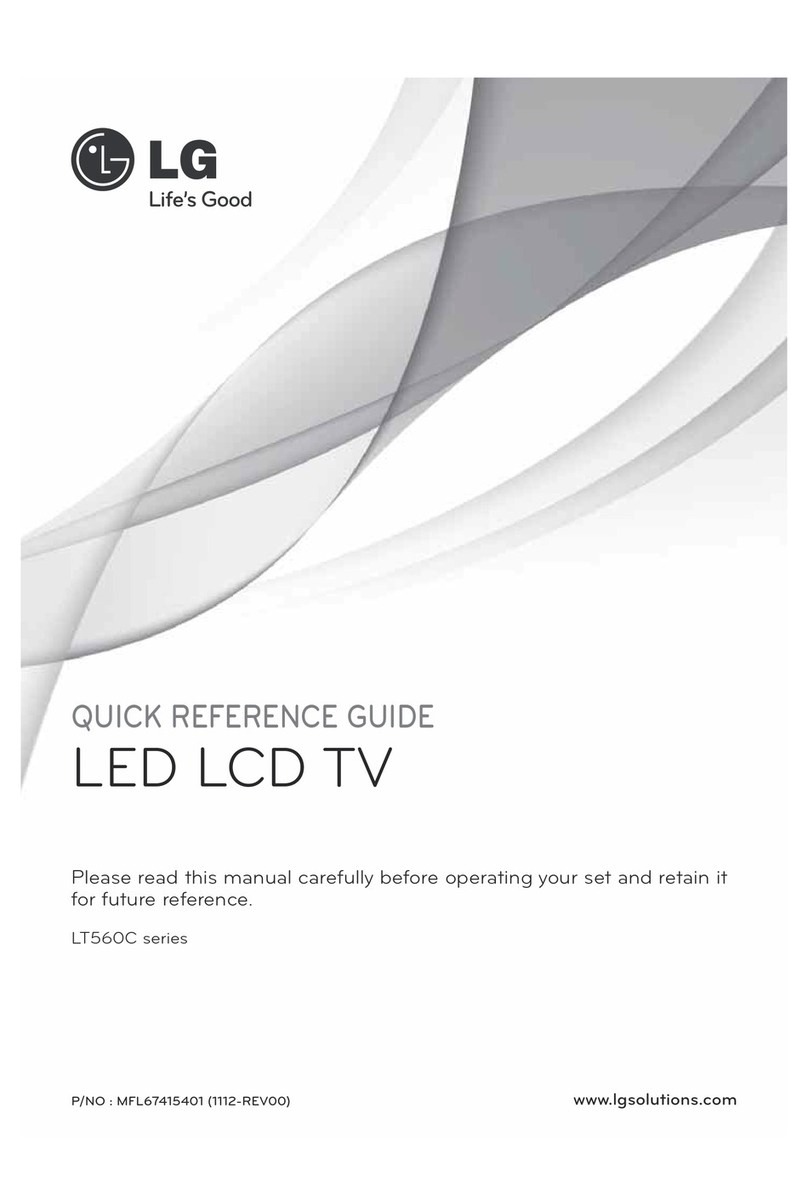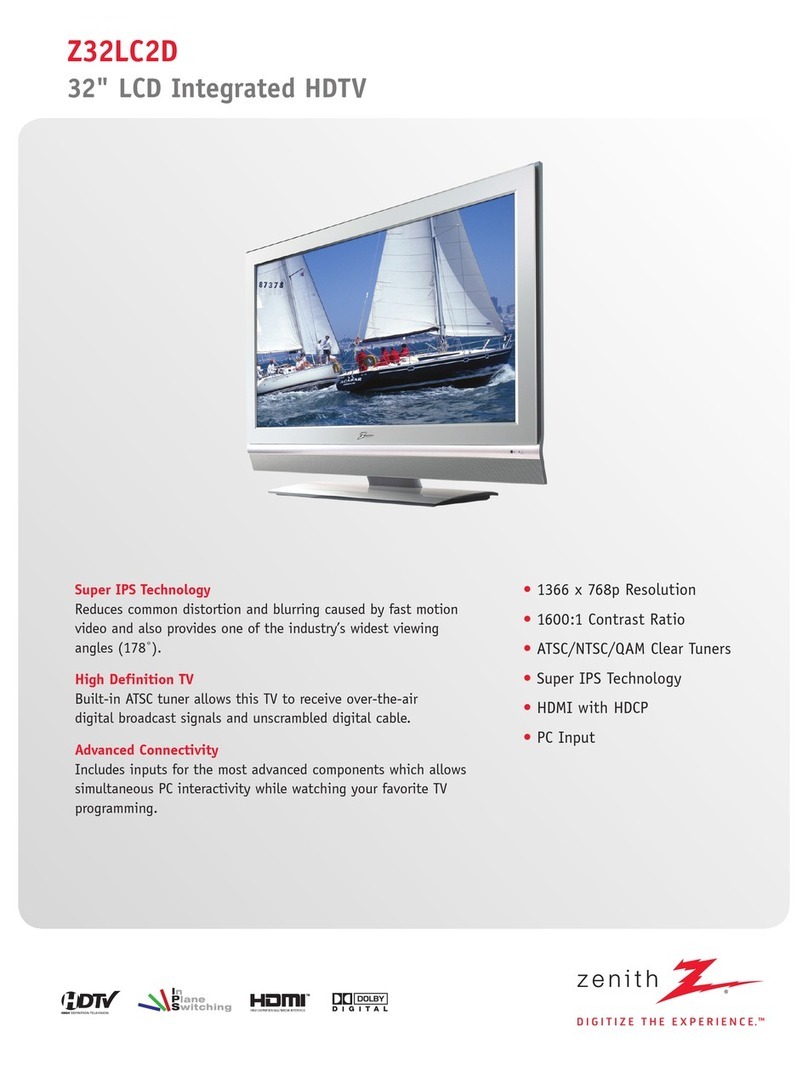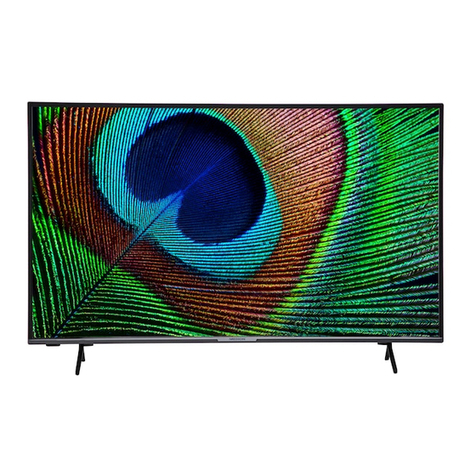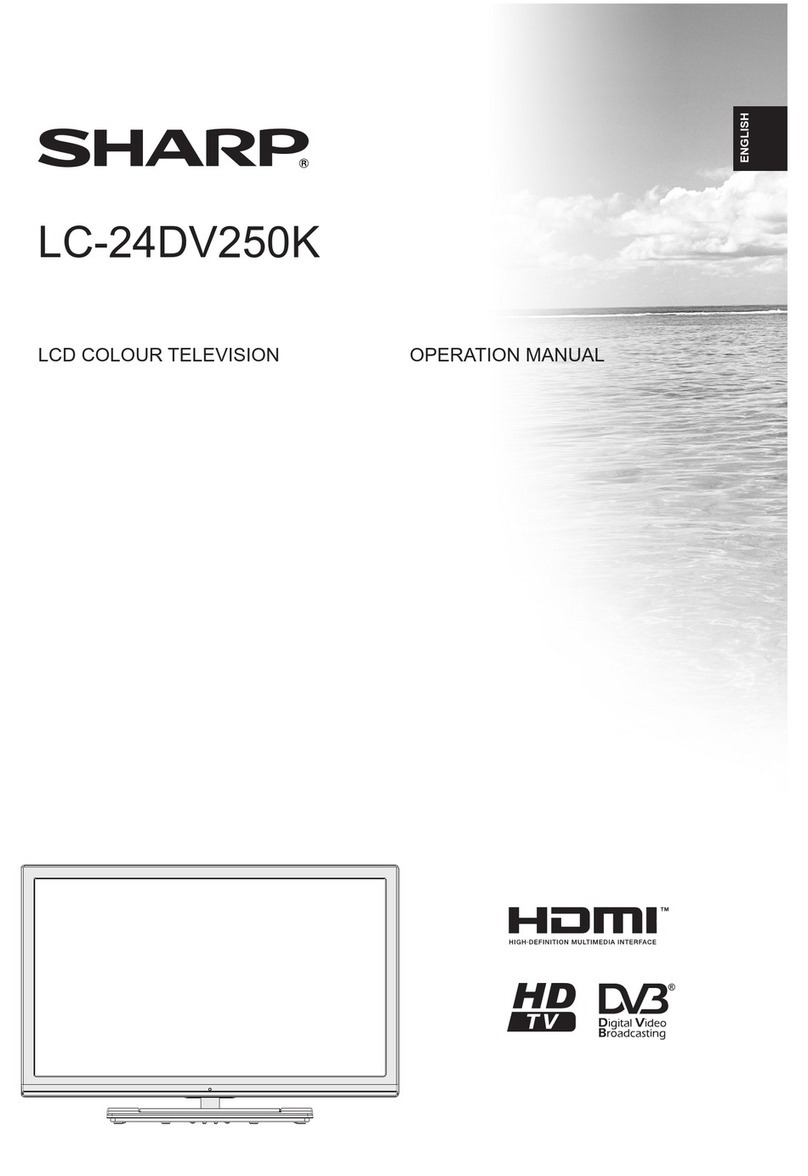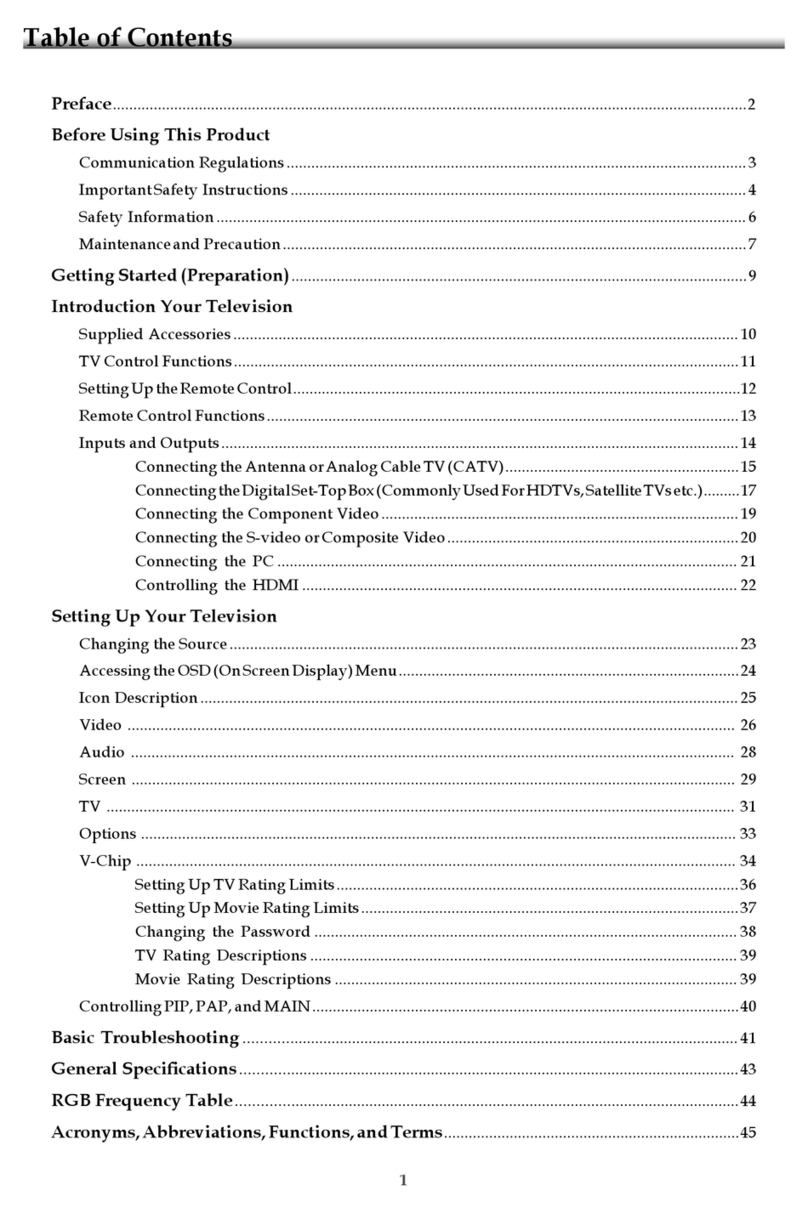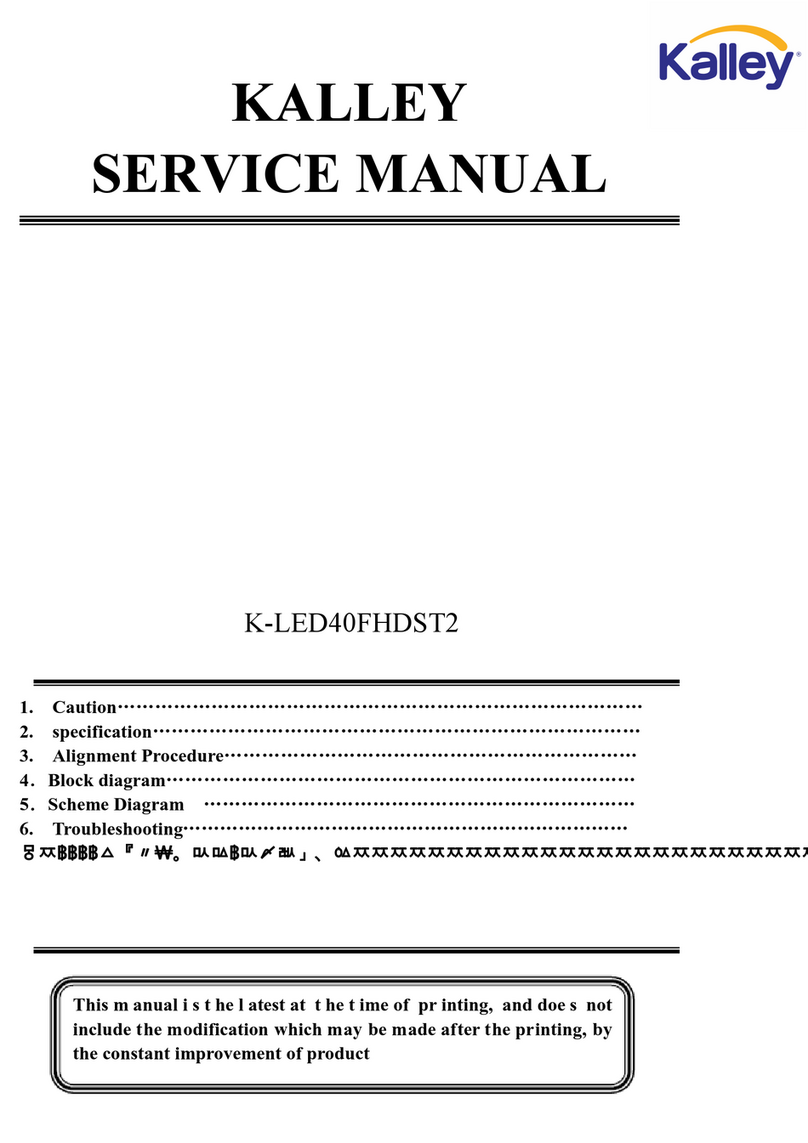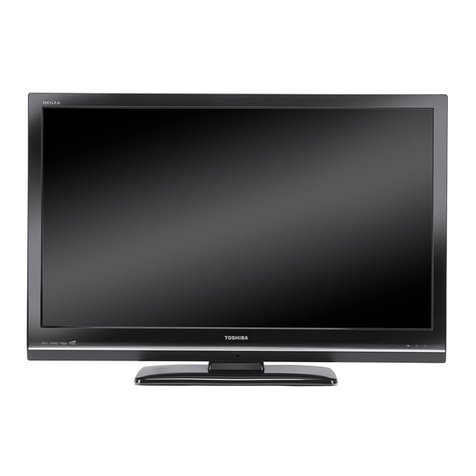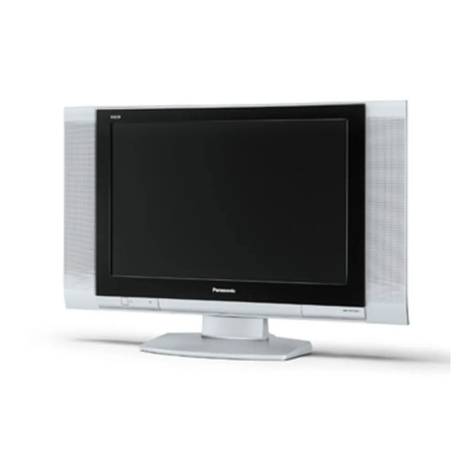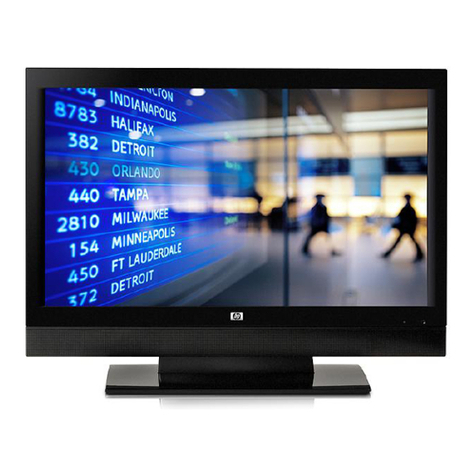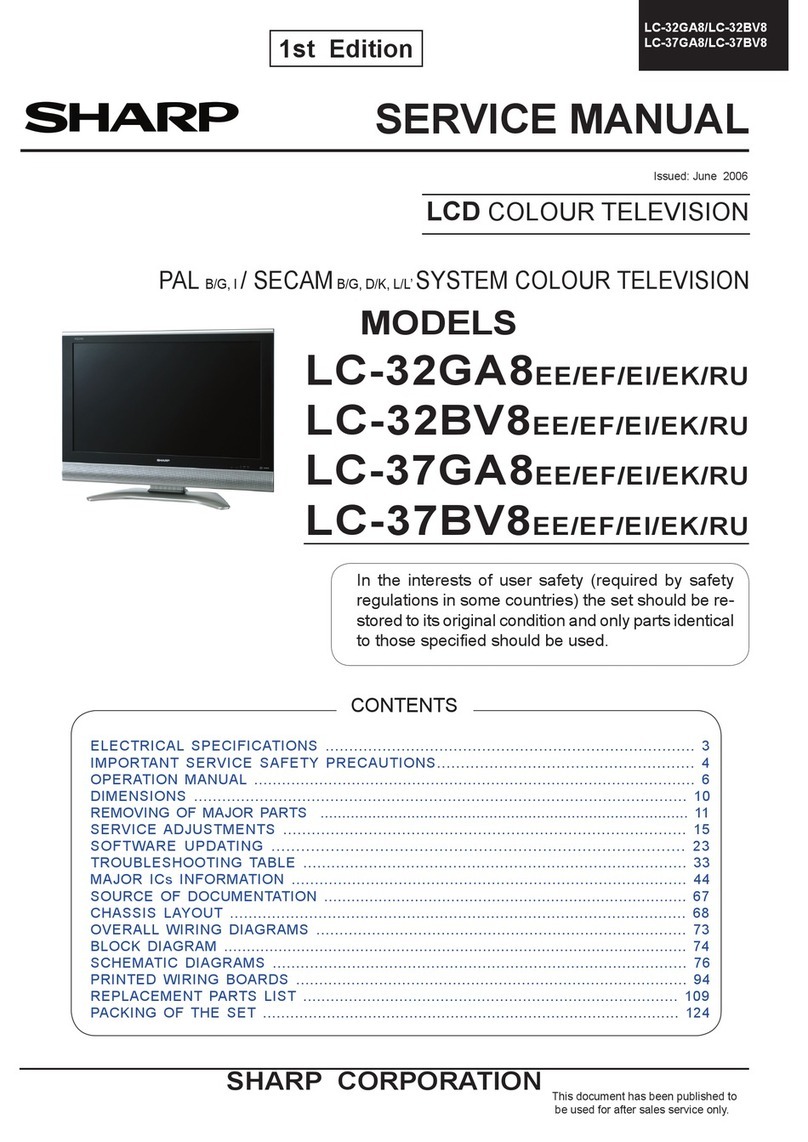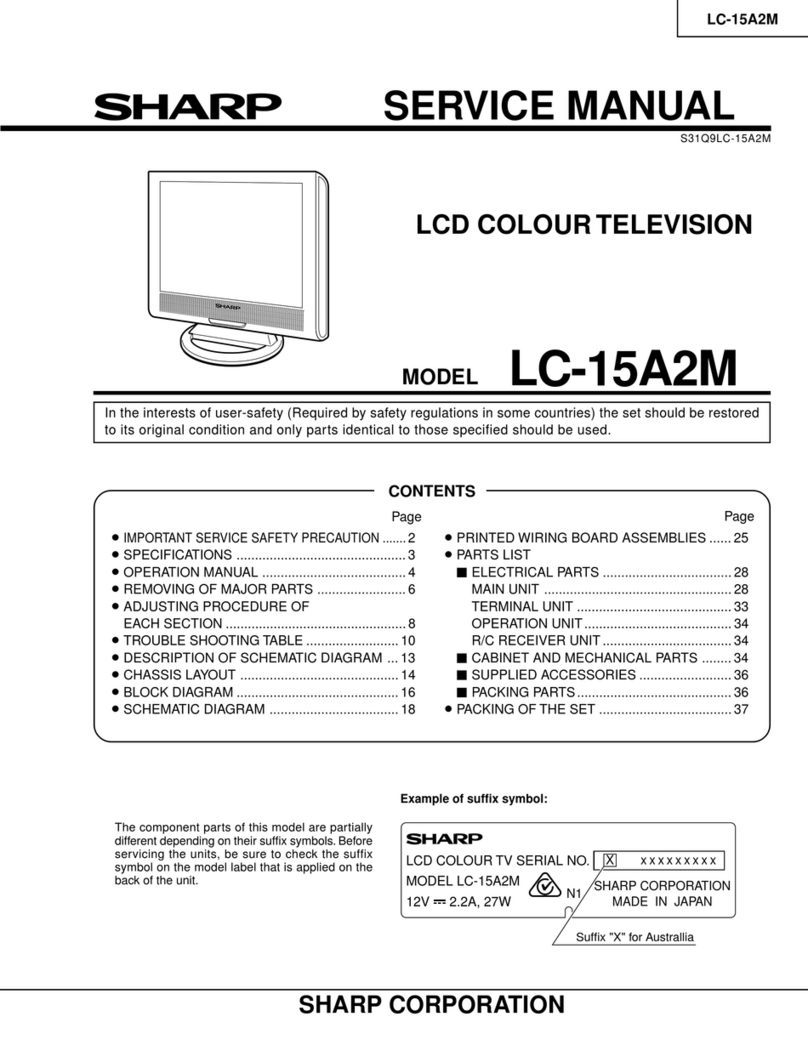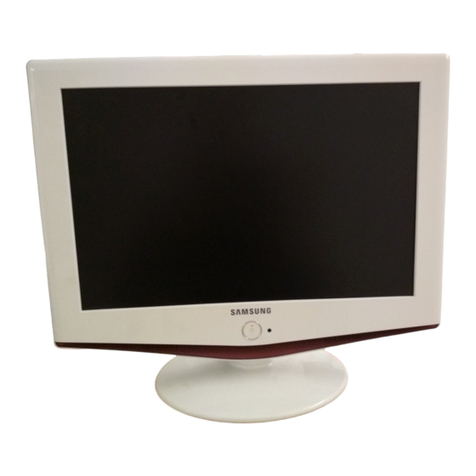6
10)During the repair, DO NOT leave the Power On or Burn-in period for more than 1
hour while the TV is face down on a cloth. Refer Figure 1
1-2-2. Caution for OLED Panel
1) Handling
When repairing the TV set, be sure you are grounded by using a wrist band.
*Do not press on the panel or frame edge to avoid the risk of electric shock.
*Do not scratch or press on the panel with any sharp objects.
*Do not leave the module in high temperatures or in areas of high humidity for an
extended period of time.
*Do not expose the panel to direct sunlight.
*Avoid contact with water. It may cause a short circuit within the module.
*Disconnect theAC power when replacing.
*Always clean the panel with a soft cloth material.
*Use care when handling the wires or connectors.Damaging the wires may cause a
short.
*Protect the panel from ESD to avoiddamaging the electronic circuit.
*Do not recommendpower-on in the conditions which laid face down the panel, in
repair activity. Refer Figure 1.
*When transporting by hand, do notput stress on the paneland the frame around the
screen
Figure 1.
Refer to the panel handling chapter of each Service manual,
or the "Transporting" information of the Reference Guide of each model for how to hold
it.
2) OLEDScreen
•Although the OLED screen is made with high-precision technology and 99.99% or
more of the pixels are effective, black dots may appear or bright points of light (white,
red, blue, or green) may appear constantly on the OLED screen. This is a structural
property of the OLED screenand is not a malfunction.
•Do notpush or scratch the front filter, or place objects on top of this TV set. The
image may be uneven or the OLED screen may be damaged.
•The screenand cabinet get warm when this TV set is in use. This is not a malfunction.
3) Precautionsto Protect the Screenfrom Damage
Image retention
OLED TV’s are susceptible to image retention (burn-in)due to the characteristics of the
materials used. Image retention may occur if images are displayed in the same location
on the screen repeatedly or over extendedperiods of time. Thisisnot a malfunction of
the TV.Avoiddisplaying images that may cause image retention.
The following are examples of images that may cause image retention:
•Content with black bars either on the top andbottom and/or the left and right sides of
the screen. (for example, Letterboxed, 4:3 screen, Standard definition)
•Static images such as photos.
•Video games that might have static content in some part of the screen.
•On-screen menus, program guides, channel logos etc.
•Static content from applications.
•On-screen tickers, such as those used for news and headlines.
SAFETY NOTES SELF DIAGNOSTIC FUNCTION TROUBLESHOOTING SERVICE ADJUSMENT DIAGRAMS HANDLING GUIE
SAFETY NOTES
